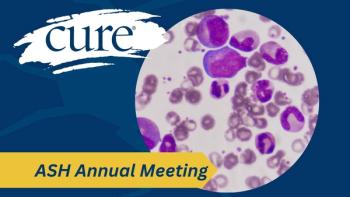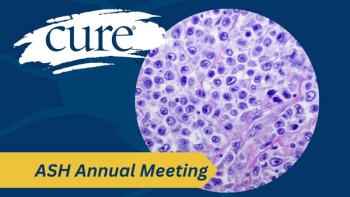When compared with versus fulvestrant (Faslodex), vepdegestrant (ARV-471) treatment elicited a statistically significant and clinically meaningful improvement in survival without progression by blinded independent central review (BICR) in pretreated patients with ESR1-mutant estrogen receptor (ER)-positive, HER2-negative advanced or metastatic breast cancer.
These findings were garnered from the phase 3 VERITAC-2 trial, data from which were shared at the 2025 ASCO Annual Meeting.
Of the 136 patients in the vepdegestrant arm, and the 134 patients in the Faslodex arm, at a median follow-up of 7.4 months and 6.0 months, respectively, the median progression-free survival was 5.0 months and 2.1 months. At the time of the analysis, 58% of progression-free survival events had occurred in the vepdegestrant arm versus 71% in the Faslodex arm; treatment was ongoing in 33% and 12% of patients, respectively. The 6-month progression-free survival rates with vepdegestrant and Faslodex were 45.2% and 22.7%, respectively.
BICR-assessed progression-free survival did not show a substantial improvement with vepdegestrant versus Faslodex in the all-comer population.
“Vepdegestrant is the first PROTAC [proteolysis targeting chimera] to be evaluated in a phase 3 study,” lead study author Dr. Erika Hamilton, said in a press briefing ahead of the meeting. “These results support vepdegestrant as a potential treatment option for previously treated [patients with] ESR1-mutant ER-positive, HER2-negative advanced breast cancer.”
Setting the Stage for VERITAC-2
There is no agreed-upon standard of care for patients with ER-positive, HER2-negative advanced breast cancer following progression on frontline endocrine therapy. Faslodex is a selective estrogen receptor degrader, also known as SERDs, that is typically given in the second line even though it is associated with modest progression-free survival benefit following progression on CDK4/6 inhibition and endocrine therapy.
Since January 2023, Orserdu (elacestrant) has become an option for postmenopausal women or adult men with ER-positive, HER2-negative, ESR1-mutated advanced or metastatic breast cancer with disease progression following at least one line of endocrine therapy. However, median progression-free survival remains limited.
Vepdegestrant is a selective, oral PROTAC ER degrader that targets the mutant and wild-type ER. In the first-in-human phase 1/2 trial, vepdegestrant was well tolerated and active, with a clinical benefit rate of 51.2% in heavily pretreated patients with ESR1-mutant ER-positive, HER2-negative advanced breast cancer who had received a median of 3 (range, 0-7) prior lines of therapy in the metastatic setting.
Glossary:
Overall survival (OS): the length of time from either the date of diagnosis or the start of treatment for a disease that patients diagnosed are alive.
Progression-free survival (PFS): the length of time during and after the treatment that a patient lives with the disease but it does not get worse.
Overall response rate (ORR): the proportion of patients who have a partial or complete response to therapy.
In February 2024, the FDA granted fast track designation to vepdegestrant for the treatment of patients with ER-positive, HER2-negative locally advanced or metastatic breast cancer previously treated with endocrine-based therapy.
Seeking confirmation of benefit in the VERITAC-2 trial, investigators enrolled patients at least 18 years of age with ER-positive, HER2-negative advanced or metastatic breast cancer that developed radiological progression during or after the last line of therapy. Prior therapy consisted of 1 line of endocrine therapy and a CDK4/6 inhibitor, and no more than 1 additional line of endocrine therapy. Patients must have been exposed to the most recent line of endocrine therapy for at least 6 months, and prior chemotherapy for advanced or metastatic disease or a selective estrogen receptor degrader like Faslodex or Orserdu was not allowed.
In total, 313 eligible patients were randomly assigned to receive 200 miligrams (mg) of oral vepdegestrant once daily or 500 mg of intramuscular Faslodex on days one and 15 of cycle one, and day one of subsequent cycles. Treatment cycles were 28 days. Patients were stratified by ESR1 status (mutated versus not) and visceral disease (yes versus no).
The primary end point was BICR-assessed progression-free survival in the ESR1-mutant and all-comer populations. Secondary end points were overall survival, clinical benefit rate and objective response rate by BICR, and side effects.
Hamilton noted that approximately 80% of patients had received 1 prior line of therapy and around 20% had received 2 prior lines of therapy in the advanced or metastatic setting.
Vepdegestrant Sails Through Secondary End Point Verification of Benefit
With respect to the secondary end points of the trial, vepdegestrant (121 patients) more than doubled the clinical benefit rate compared with Faslodex (119 patients) in the ESR1-mutant population, at 42.1% versus 20.2%, respectively. The overall response rate was 18.6% with vepdegestrant (97 patients) versus 4.0% with Faslodex. The median duration of response was not reached.
Safety was evaluated in all-treated patients who received vepdegestrant (312 patients) and Faslodex (307 patients) and was generally well tolerated.
“Vepdegestrant demonstrated a favorable safety profile, evidenced by few side effects [< 5%] leading to dose reduction or discontinuation,” Hamilton said.
Any-grade treatment-emergent side effects occurred in 87% of patients on vepdegestrant (grade 3 or higher, 23%) versus 81% of those on Faslodex (grade 3 or higher, 18%). Serious side effects occurred in 10% and 9% of patients on vepdegestrant and Faslodex, respectively. Treatment-emergent side effects leading to discontinuation and dose reduction occurred in 3% and 2% of cases, respectively, in the vepdegestrant arm. Only 1% of patients in the Faslodex arm required treatment discontinuation because of a treatment-emergent side effect. Treatment-related side effects also occurred in the vepdegestrant (any grade, 57%; grade 3 or higher, 8%) and Faslodex (any grade, 40%; grade 3 or higher, 3%) arms.
Any-grade treatment-emergent side effects that occurred in at least 10% of patients in the vepdegestrant and Faslodex arms, respectively, were fatigue (27%; 16%), alanine aminotransferase increase (14%; 10%), aspartate aminotransferase increase (14%; 10%), nausea (13%; 9%), anemia (12%; 8%), neutropenia (12%; 5%), back pain (11%; 7%), arthralgia (11%; 11%) and decreased appetite (11%; 5%).
No treatment-related deaths occurred.
“Overall survival analyses remain immature, and follow-up is ongoing,” Hamilton concluded.
Putting the Results in Context
“This is a very exciting study,” Dr. Jane L. Meisel, professor in the Departments of Hematology and Medical Oncology and Gynecology & Obstetrics, and codirector of Breast Medical Oncology at Emory University School of Medicine in Georgia, said. “This drug is something that we think is going to be a very exciting option potentially for patients with previously treated, ESR1-mutant ER-positive, HER2-negative advanced breast cancer. There are a lot of exciting things happening in this space, so seeing what the overall survival analyses show will be interesting and how this compares with some of the other things that we [have]. We all look forward to that. This is a very exciting option, and the first of its kind in terms of being a PROTAC as opposed to other mechanisms of action, so [there’s] a lot to think about, and exciting data to see.”
References
- Hamilton E, De Laurentiis M, Jhaveri K, et al. Vepdegestrant, a PROTAC estrogen receptor (ER) degrader, vs fulvestrant in ER-positive/human epidermal growth factor receptor 2 (HER2)–negative advanced breast cancer: results of the global, randomized, phase 3 VERITAC-2 study. J Clin Oncol. 2025;43(suppl 17):LBA1000. doi:10.1200/JCO.2025.43.17_suppl.LBA1000
- Schott AF, Hurvitz S, Ma C, et al. GS3-03 ARV-471, a PROTAC estrogen receptor (ER) degrader in advanced ER-positive/human epidermal growth factor receptor 2 (HER2)-negative breast cancer: phase 2 expansion (VERITAC) of a phase 1/2 study. Cancer Res. 2023;83(suppl 5):GS3-03. doi:10.1158/1538-7445.SABCS22-GS3-03
For more news on cancer updates, research and education, don’t forget to subscribe to CURE®’s newsletters here.






